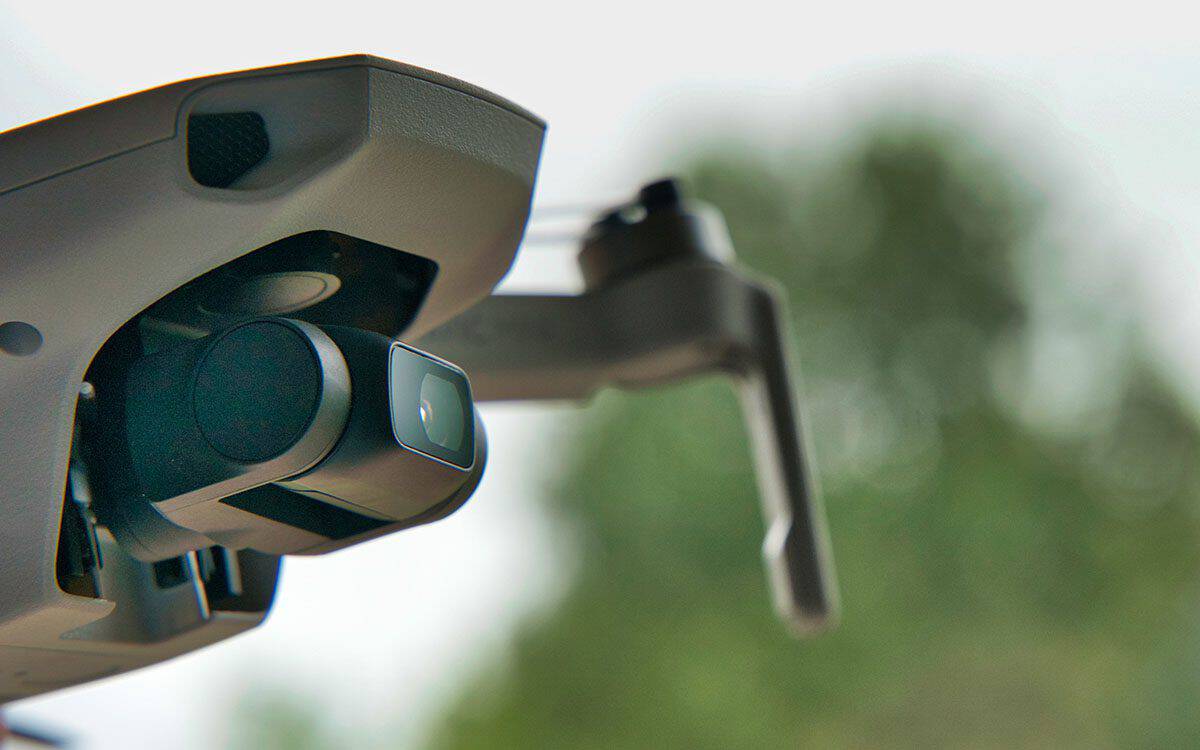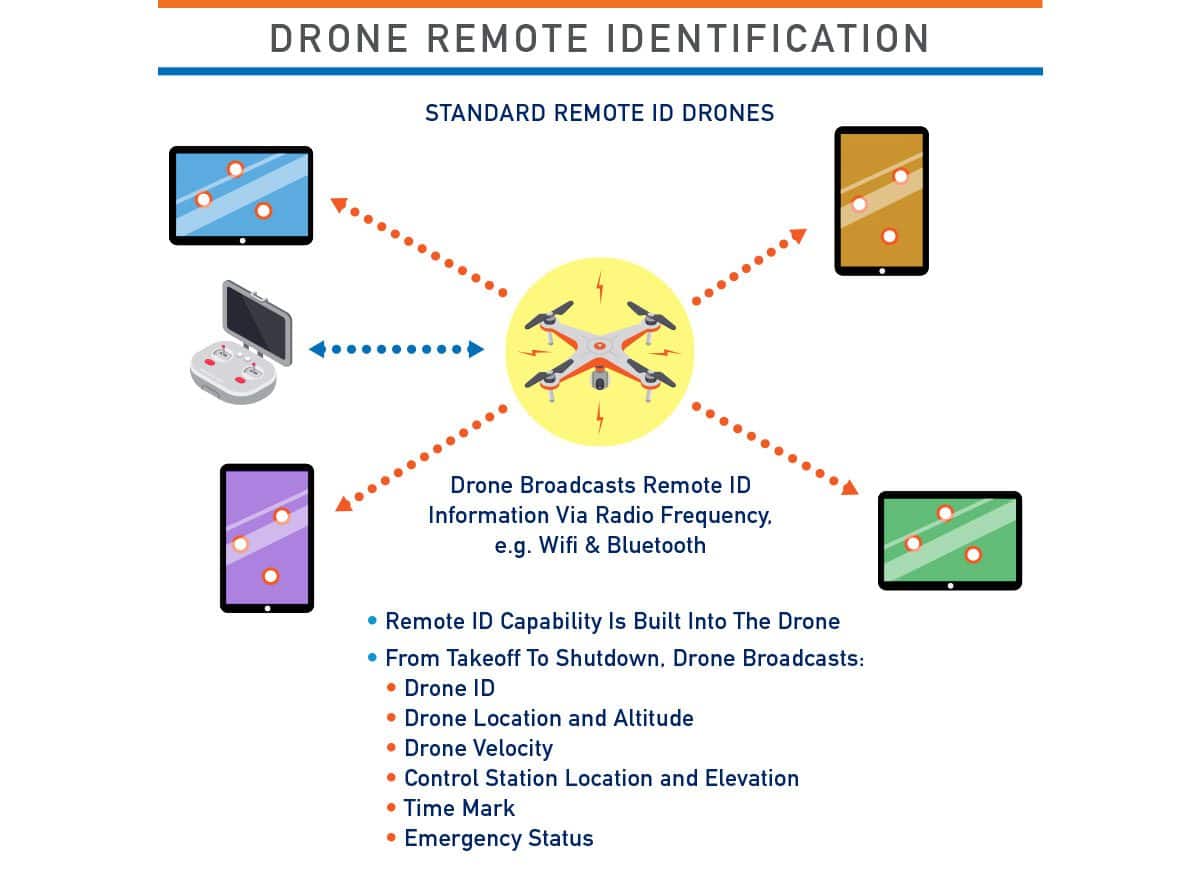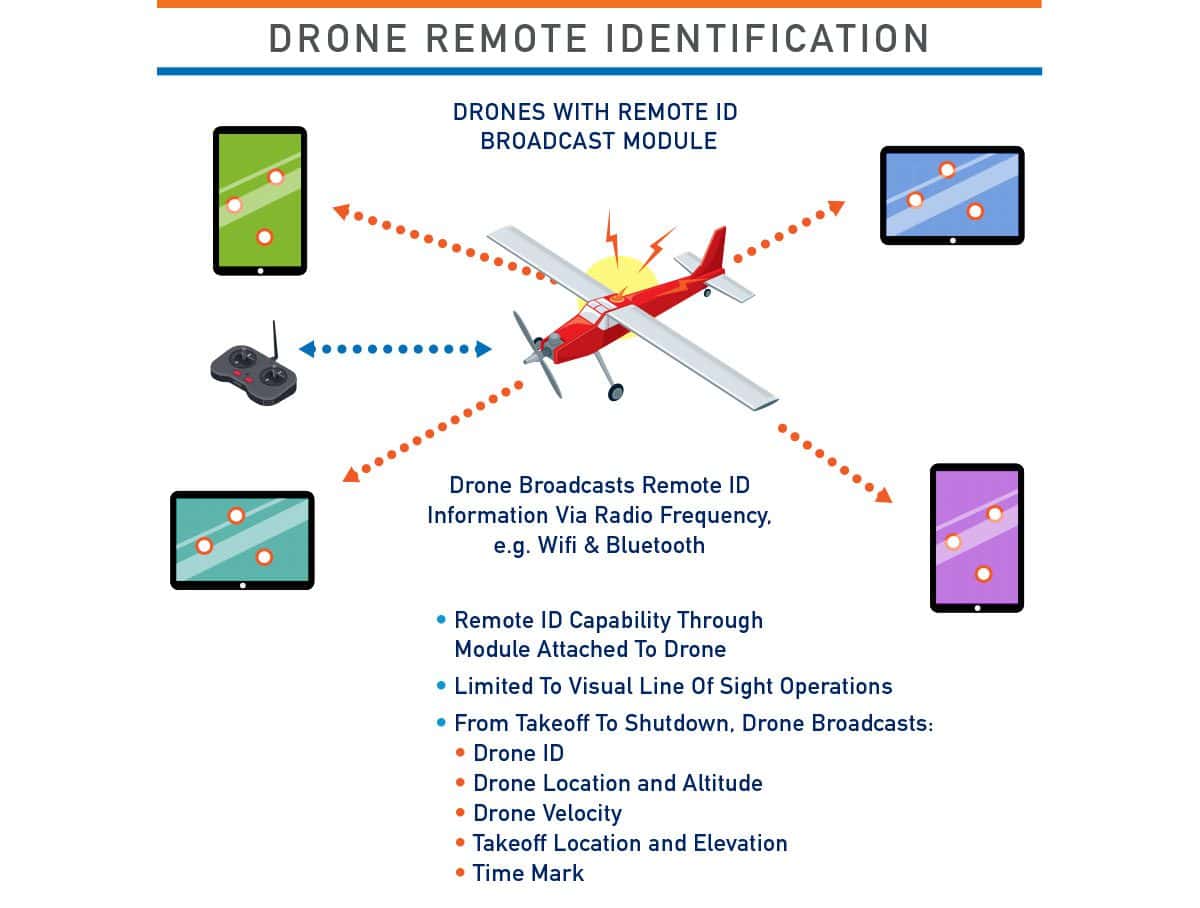
Understanding Remote ID for Drones: What You Need to Know
secure drone identification and tracking
Drones have become an increasingly popular way to capture stunning aerial views, collect data for analysis and mapping, and even deliver packages. As the drone industry continues to grow, so does the need for safety and accountability in the skies. This is where Remote ID comes into play, aiming to secure drone identification and tracking. Beginning September 16, 2023, drone pilots who register their drone with the FAA will need Remote ID. So, let’s break down the concept of Remote ID, its importance, and how it affects recreational and professional drone pilots, like you.
The Story Behind Remote ID
The journey towards Remote ID began when the FAA published the Notice of Proposed Rulemaking (NPRM) on Remote Identification of Unmanned Aircraft Systems in December 2019. After receiving extensive feedback from drone enthusiasts and experts – a whopping 53,000 comments – the FAA fine-tuned the rules. The final version was published in January 2021, with an effective date delayed to April 2021 due to necessary corrections.
What is Remote ID?
Remote ID, short for Remote Identification, is like a digital license plate for drones. Just as license plates help identify and track vehicles on roads, Remote ID is designed to do the same for drones in the sky. It involves drones broadcasting specific information, such as their identification number and location, to a network that relevant authorities can access. This technology enables improved safety, security, and accountability within the airspace.
The Future of Remote ID
In the near future, operators of Standard Remote ID drones may have a choice: they can either broadcast their drone’s ID (similar to a serial number) or opt for a Session ID. This Session ID is a unique identifier assigned to the drone pilot. While the Session ID will be traceable by law enforcement and aviation authorities, it won’t be accessible to the general public. The FAA is actively developing strategies for assigning Session IDs, taking into account existing policies, and seeking public input before finalizing the rules.Navigating the Transition
For recreational drone flyers, complying with Remote ID is relatively straightforward. When registering your drone, you’ll need to provide the Remote ID serial number. If you previously registered a drone and answered “No” to the Remote ID question, you’ll need to create a new listing for that drone and answer “Yes” this time. This ensures that your drone is properly identified and compliant with Remote ID regulations.
However, for Part 107 pilots, the process is different. They need to register each individual device (whether it’s a Standard Remote ID drone or a Remote ID broadcast module) separately in their inventory. Each device will be assigned its own distinct registration number.
Two ways drone pilots can meet the Remote ID rules:
- Standard Remote ID Drone: Broadcasting Drone’s ID
The first approach involves flying a Standard Remote ID drone. These drones come equipped with built-in Remote ID broadcast capabilities that automatically transmit identification and location information while in flight. Drone manufacturers ensure that these models comply with Remote ID requirements, making it convenient for pilots to adhere to the rules without additional modifications. If you’re using a Standard Remote ID drone, you’re already meeting Remote ID rules effortlessly.

- Remote ID Broadcast Module: Retrofitting Non-Compliant Drones
For those who own non-Standard Remote ID drones but still want to comply with the rules, the Remote ID broadcast module offers a solution. This small device can be added to your drone, enabling it to broadcast identification and location information. While flying, the module transmits the necessary data, allowing authorities to track and identify your drone. It’s an effective way to retrofit your existing drones and ensure they meet Remote ID requirements without replacing the entire aircraft.

Image from faa.gov
Important Steps for Compliance
Before You Get Started:
- Ensure your device has an FAA-approved Remote ID Declaration of Compliance
- Have your Remote ID serial number handy. If you are not sure how to locate it, please check with the manufacturer for assistance.
- If you previously listed a drone and answered “No” to the Remote ID question, you will now create a new listing for that same drone.
Part 107 – Editing an Existing Registration
- Log in to FAADroneZone
- Click on the button labeled “Launch Drone Owners and Pilots Dashboard”
- Make sure you are on the Part 107 Dashboard
- Click on “Manage Device Inventory”
- Click on the three vertical dots associated with the drone in the “Actions” column and select “Edit” from the drop down menu
- Edit the answer to the Remote ID question to “Yes”
- Enter the Remote ID serial number from either the updated Standard Remote ID drone or the Remote ID broadcast module: (NOTE: this number may be listed on either the device or the controller)
- Click on “Save”
Part 107 – Registering a New Device
- Log in to FAADroneZone
- Click on the button labeled “Launch Drone Owners and Pilots Dashboard”
- Make sure you are on the Part 107 Dashboard
- Click on “Manage Device Inventory”
- Click on “Add Device”
- Answer the Remote ID question “Yes”
- Choose the device type from the drop down menu (Remote ID broadcast module or Standard Remote ID drone):
- If using a broadcast module, list the drones make/model while adding the broadcast modules Remote ID serial number in the following step.
- Enter the Remote ID serial number (NOTE: this number may be listed on either the device or the controller)
- Click on “Add Device”
- Continue on with the registration process.
Remote ID is a pivotal step towards safer and more responsible drone operations. By implementing Remote ID technology, drones can be better identified, and their movements can be tracked, ultimately enhancing airspace security and public safety. Whether you’re a recreational flyer capturing breathtaking landscapes or a professional pilot providing essential services, understanding and adhering to Remote ID requirements is key to keeping our skies safe and open for everyone.
Make sure you have your Remote ID today before September 16!
Get A Quote
Take Your Project To New Heights
Whether the project takes us to a major metropolitan city, a mid-sized town, or a rural area far away from civilization, we’re ready to deploy FAA-certified pilots and follow stringent safety measures. Connect with FlyGuys for a quote, and let’s explore the right solution for you.
Please note that we are currently unable to assist in the search for missing pets. This limitation is due to the specific challenges and regulations associated with using drones for such purposes.